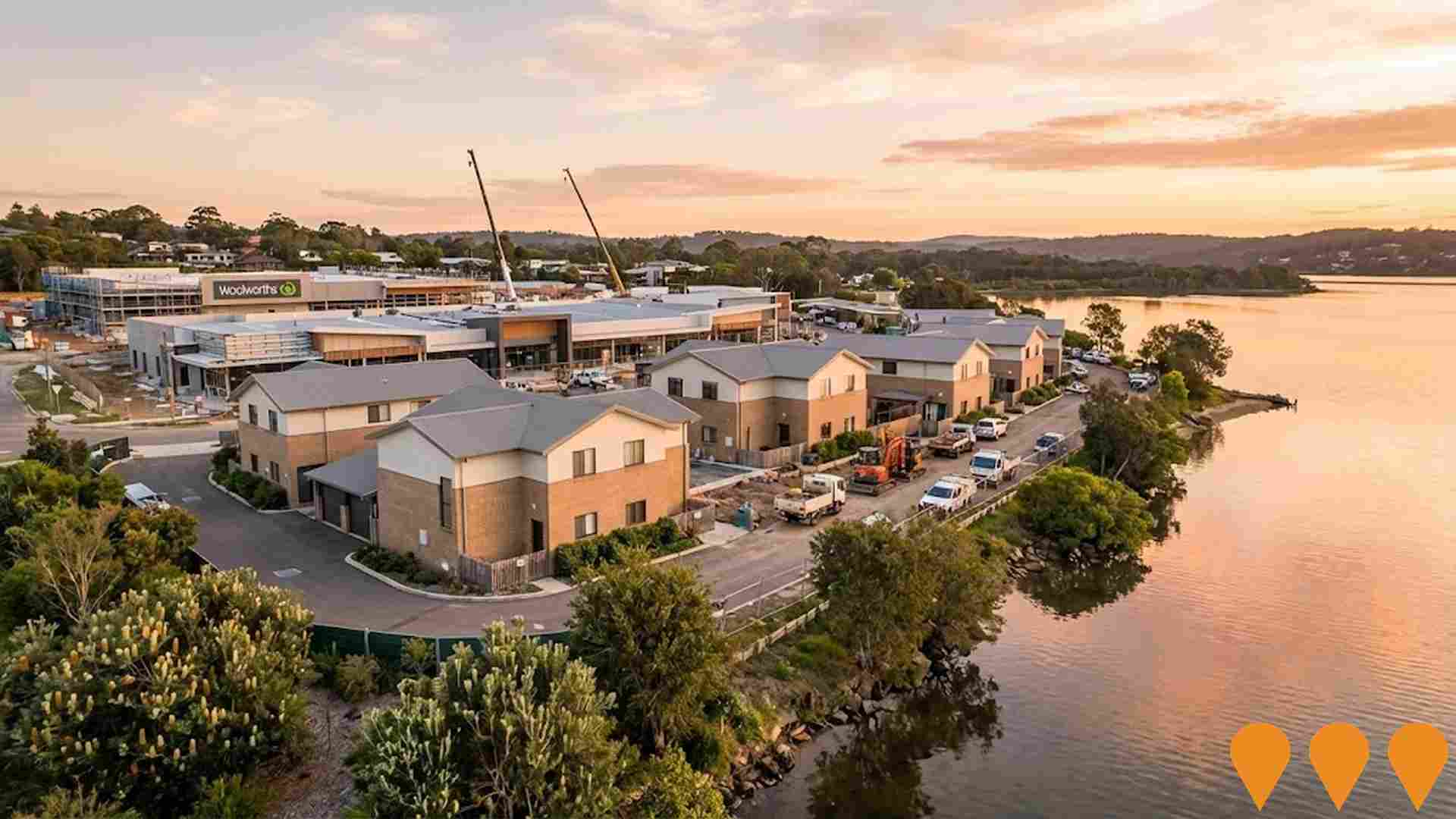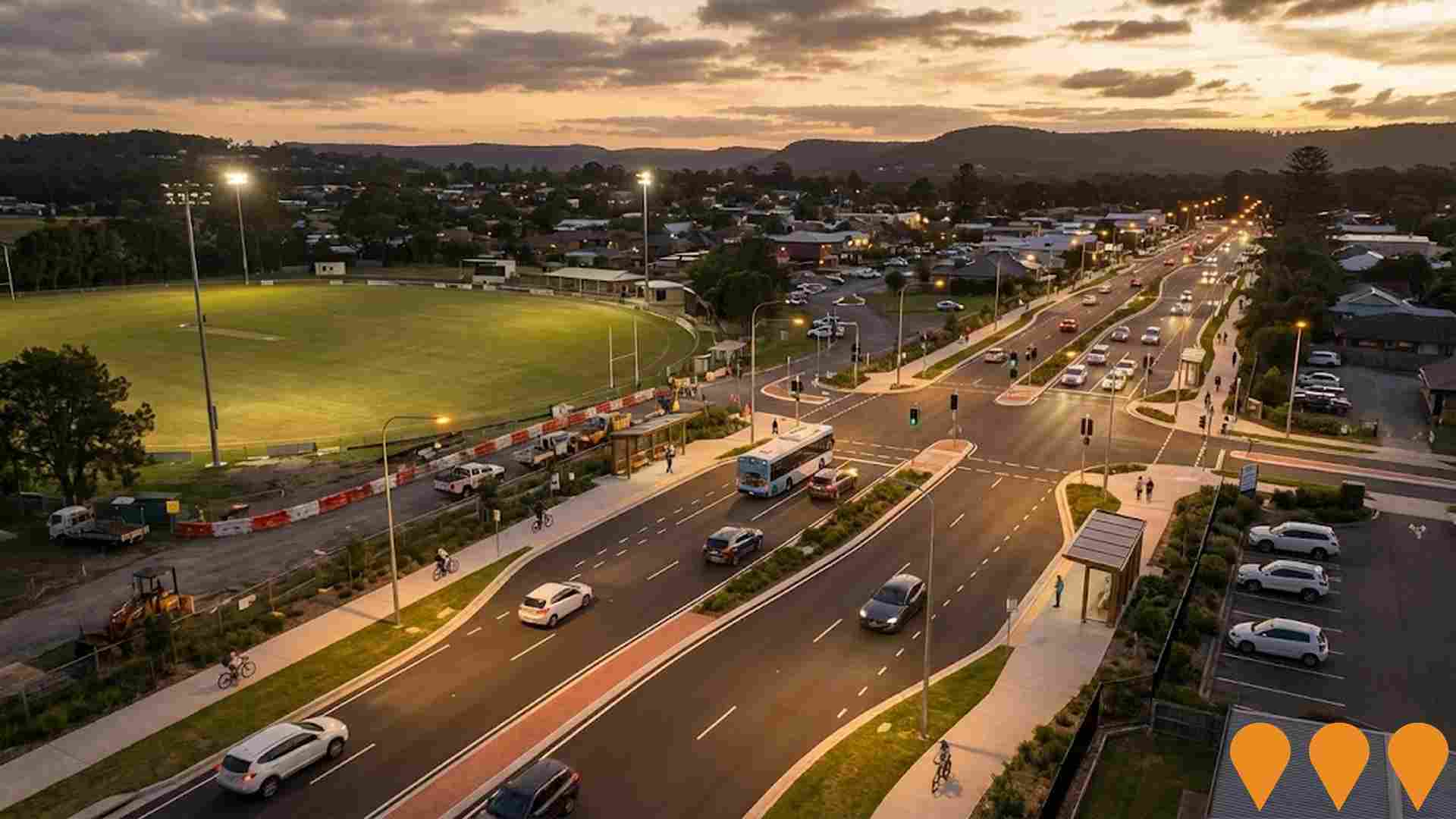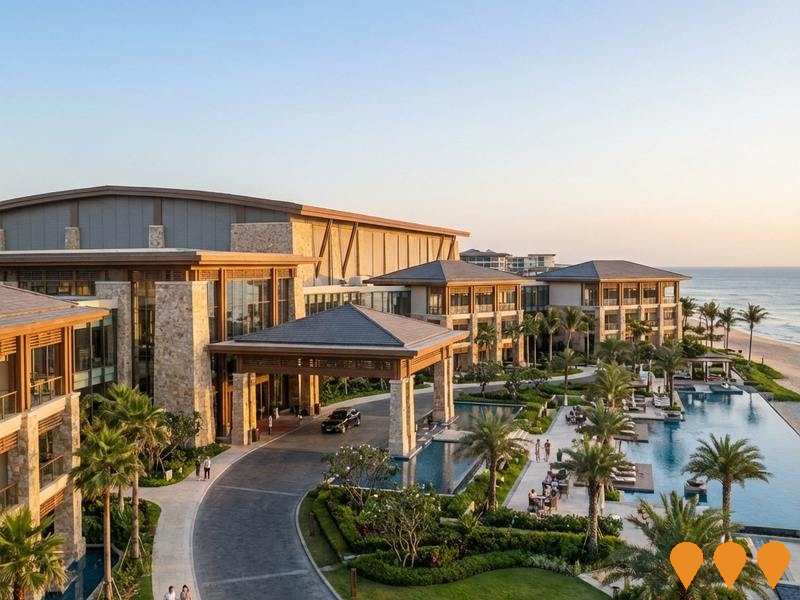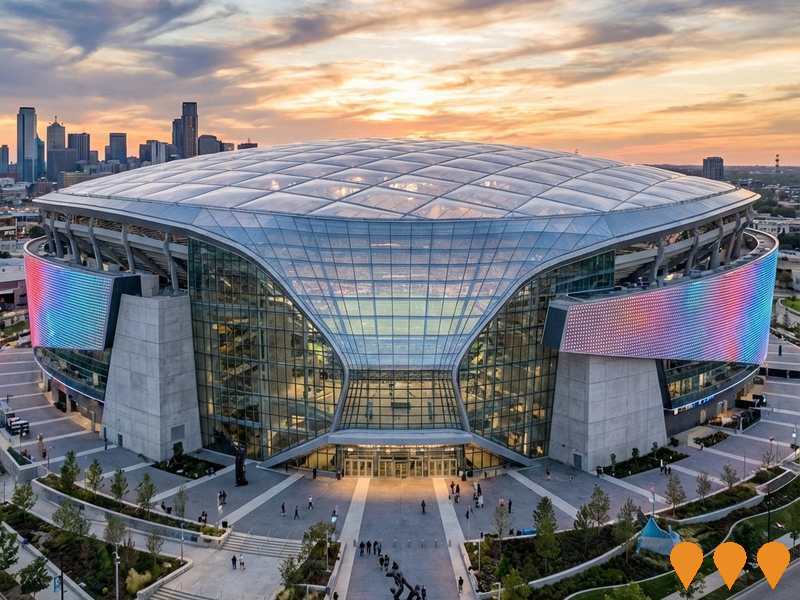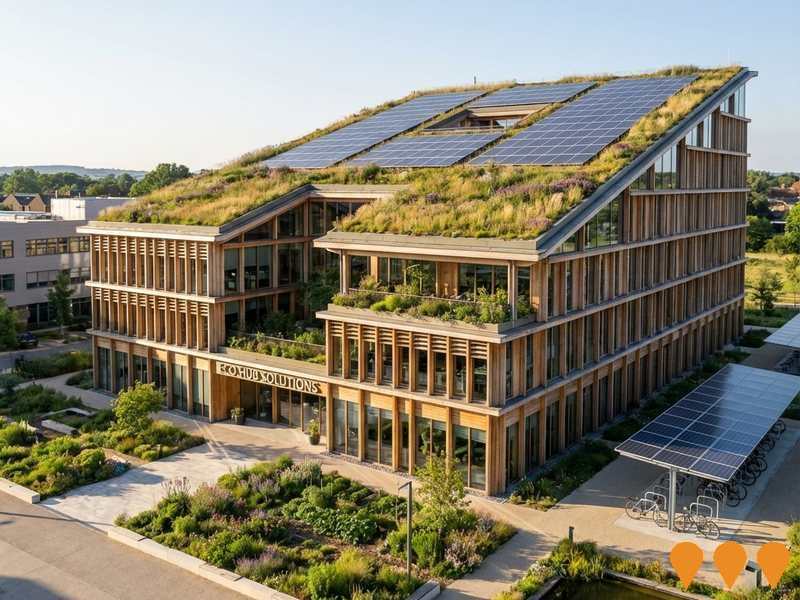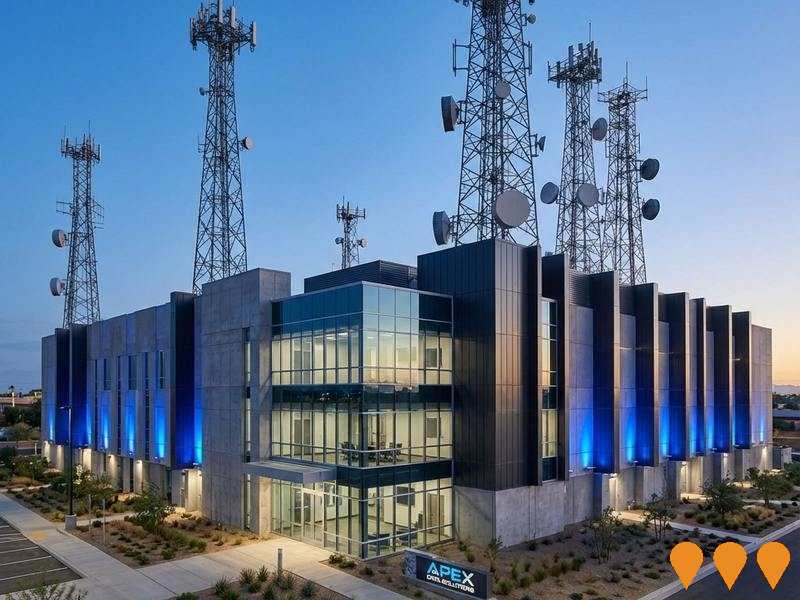Chart Color Schemes
est. as @ -- *
ABS ERP | -- people | --
2021 Census | -- people
Sales Activity
Curious about local property values? Filter the chart to assess the volume and appreciation (including resales) trends and regional comparisons, or scroll to the map below view this information at an individual property level.
Find a Recent Sale
Sales Detail
Population
An assessment of population growth drivers in Erina - Green Point reveals an overall ranking slightly below national averages considering recent, and medium term trends
Erina - Green Point's population was 14,758 as per the 2021 Census. As of Aug 2025, it is around 14,748, a decrease of 10 people (0.1%). This change is inferred from ABS estimated resident population of 14,722 in June 2024 and an additional 152 validated new addresses since the Census date. The population density is 436 persons per square kilometer. While Erina - Green Point experienced a 0.1% decline since census, the SA3 area achieved 2.3% growth. Overseas migration contributed approximately 64.6% of overall population gains recently.
AreaSearch uses ABS/Geoscience Australia projections for each SA2 area, released in 2024 with 2022 as the base year. For areas not covered by this data, NSW State Government's SA2 level projections are used, released in 2022 with 2021 as the base year. Growth rates by age group from these aggregations are applied to all areas for years 2032 to 2041. By 2041, Erina - Green Point's population is projected to increase by 998 persons, a gain of 6.3% over the 17 years.
Frequently Asked Questions - Population
Development
AreaSearch assessment of residential development drivers sees a low level of activity in Erina - Green Point, placing the area among the bottom 25% of areas assessed nationally
Erina - Green Point has seen approximately 24 dwellings granted development approval annually. Over the past five financial years, from FY-21 to FY-25124 homes were approved, with one more approved so far in FY-26. Despite a declining population in recent years, the development activity has been adequate relative to other areas, which is beneficial for buyers.
The average value of new dwellings being developed is $697,000, slightly above the regional average, indicating a focus on quality developments. This financial year has seen $26.9 million in commercial development approvals, reflecting moderate levels of commercial development. Compared to Greater Sydney, Erina - Green Point has significantly less development activity, 56.0% below the regional average per person. This constrained new construction typically reinforces demand and pricing for existing dwellings, although building activity has increased in recent years. The area's development activity is also below the national average, reflecting its maturity and suggesting possible planning constraints. New developments consist of 53.0% detached houses and 47.0% attached dwellings, with a growing mix of townhouses and apartments offering options across different price points.
This shift marks a significant departure from existing housing patterns, which are currently 84.0% houses, suggesting diminishing developable land availability and responding to evolving lifestyle preferences and housing affordability needs. The estimated population per dwelling approval in the area is 592 people, reflecting its quiet, low activity development environment. By 2041, Erina - Green Point is projected to grow by 930 residents. Construction pace is maintaining reasonable progress with this projected growth, although buyers may face increasing competition as the population grows.
Frequently Asked Questions - Development
Infrastructure
Erina - Green Point has strong levels of nearby infrastructure activity, ranking in the top 30% nationally
Changes to local infrastructure significantly influence an area's performance. AreaSearch has identified 55 projects likely to impact the area. Notable ones include Green Point Foreshore Masterplan & Reserve Upgrades, Green Point Shopping Village Expansion, Central Coast Grammar School Campus Expansion, and Broadlands Estate Green Point. The following list details those most relevant.
Professional plan users can use the search below to filter and access additional projects.
INFRASTRUCTURE SEARCH
 Denotes AI-based impression for illustrative purposes only, not to be taken as definitive under any circumstances. Please follow links and conduct other investigations from the project's source for actual imagery. Developers and project owners wishing us to use original imagery please Contact Us and we will do so.
Denotes AI-based impression for illustrative purposes only, not to be taken as definitive under any circumstances. Please follow links and conduct other investigations from the project's source for actual imagery. Developers and project owners wishing us to use original imagery please Contact Us and we will do so.
Frequently Asked Questions - Infrastructure
Gosford Hospital Redevelopment
Major $348 million hospital redevelopment featuring new 11-storey clinical services building, new front entrance, expanded emergency department, intensive care unit, birthing suite, maternity ward, rehabilitation unit, and cardiac catheterization labs. Teaching hospital affiliated with University of Newcastle with modern patient accommodation facilities and upgraded operating theatres.

Green Point Foreshore Masterplan & Reserve Upgrades
Major upgrade of the Green Point foreshore reserve including new playgrounds, picnic facilities, walking paths, waterfront access improvements, and landscaping works as part of a community-driven masterplan.

Central Coast Grammar School Campus Expansion
Multi stage campus expansion at Central Coast Grammar School's Erina Heights campus delivering a new K 6 junior school, senior college facilities, performing arts centre, upgraded sports fields and canteen under the school's facilities master plan.
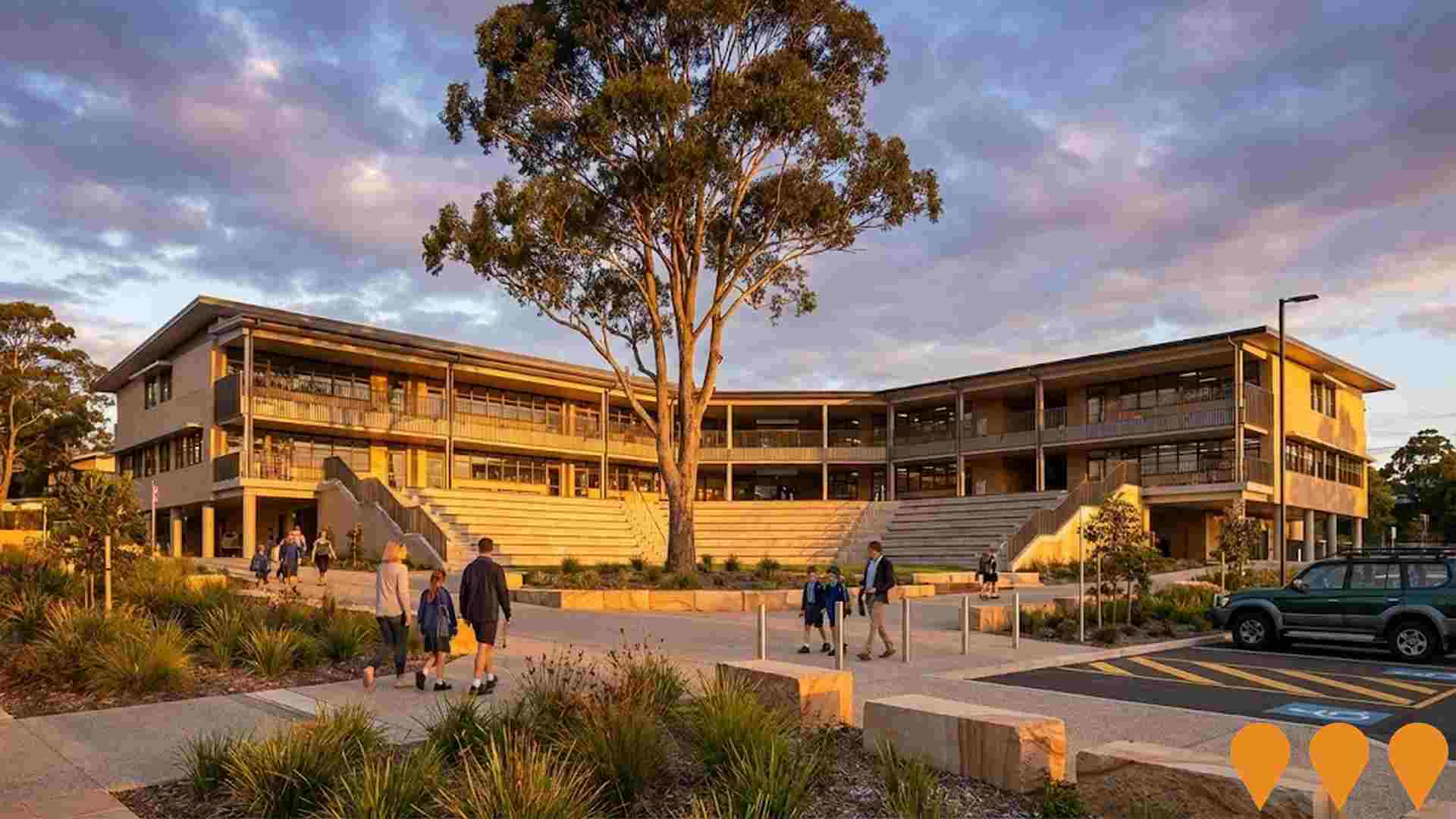
Central Coast Film Studios
Proposed $230 million film and television production facility at Calga featuring 10 state-of-the-art sound stages, Australia's largest water tank, production offices, training and education precinct, film museum, and supporting infrastructure developed by Heath Bonnefin and Craig Giles.
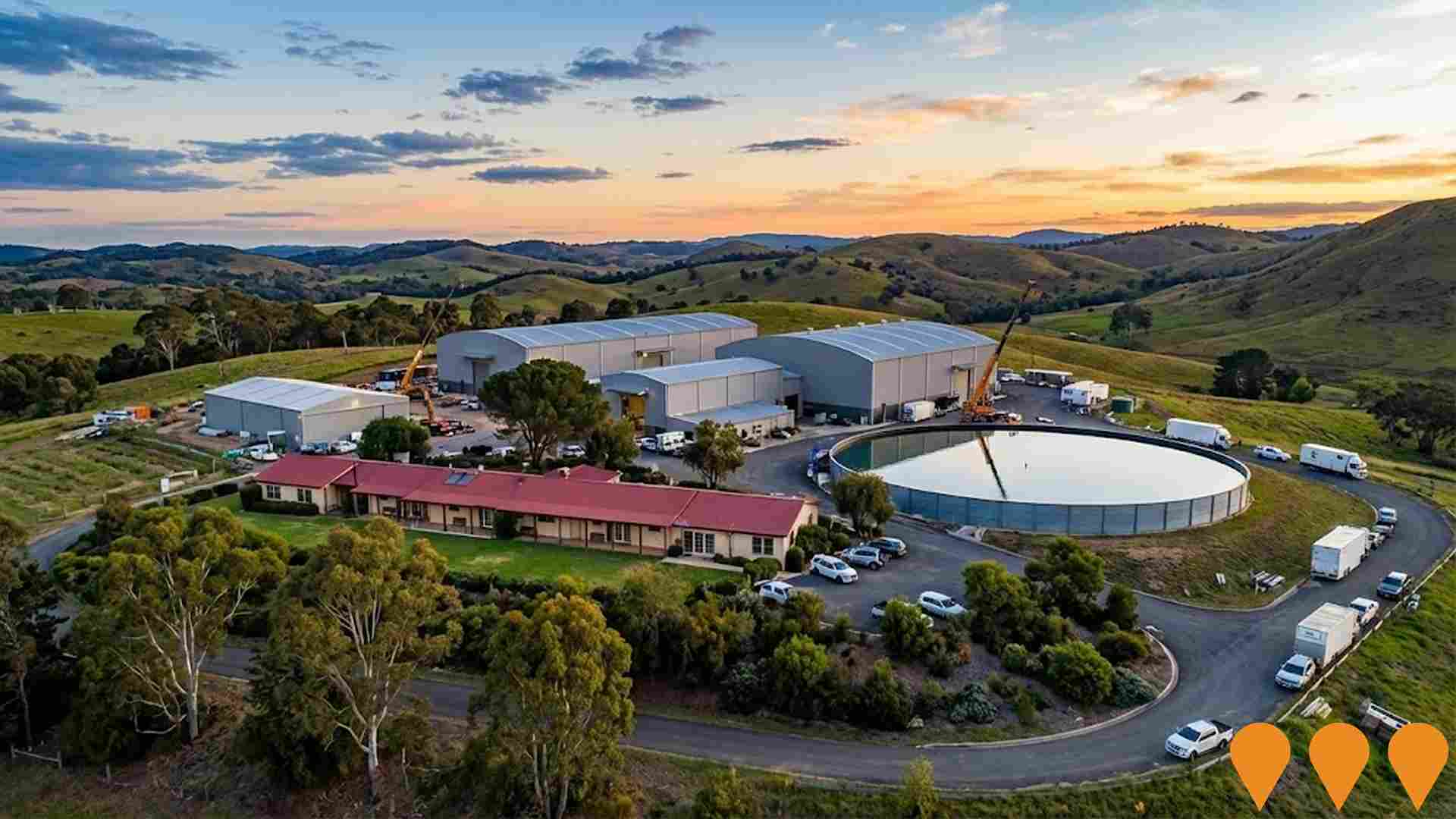
Central Coast Highway Upgrade - Wamberal to Bateau Bay
The NSW Government is planning to upgrade the Central Coast Highway between Wamberal and Bateau Bay to improve traffic flow and safety. The project will deliver better connections for the growing Central Coast community and support the local economy through improved access.

Green Point Shopping Village Expansion
Approved expansion and refurbishment of Green Point Shopping Village including additional retail tenancies, improved parking, and upgraded community facilities.
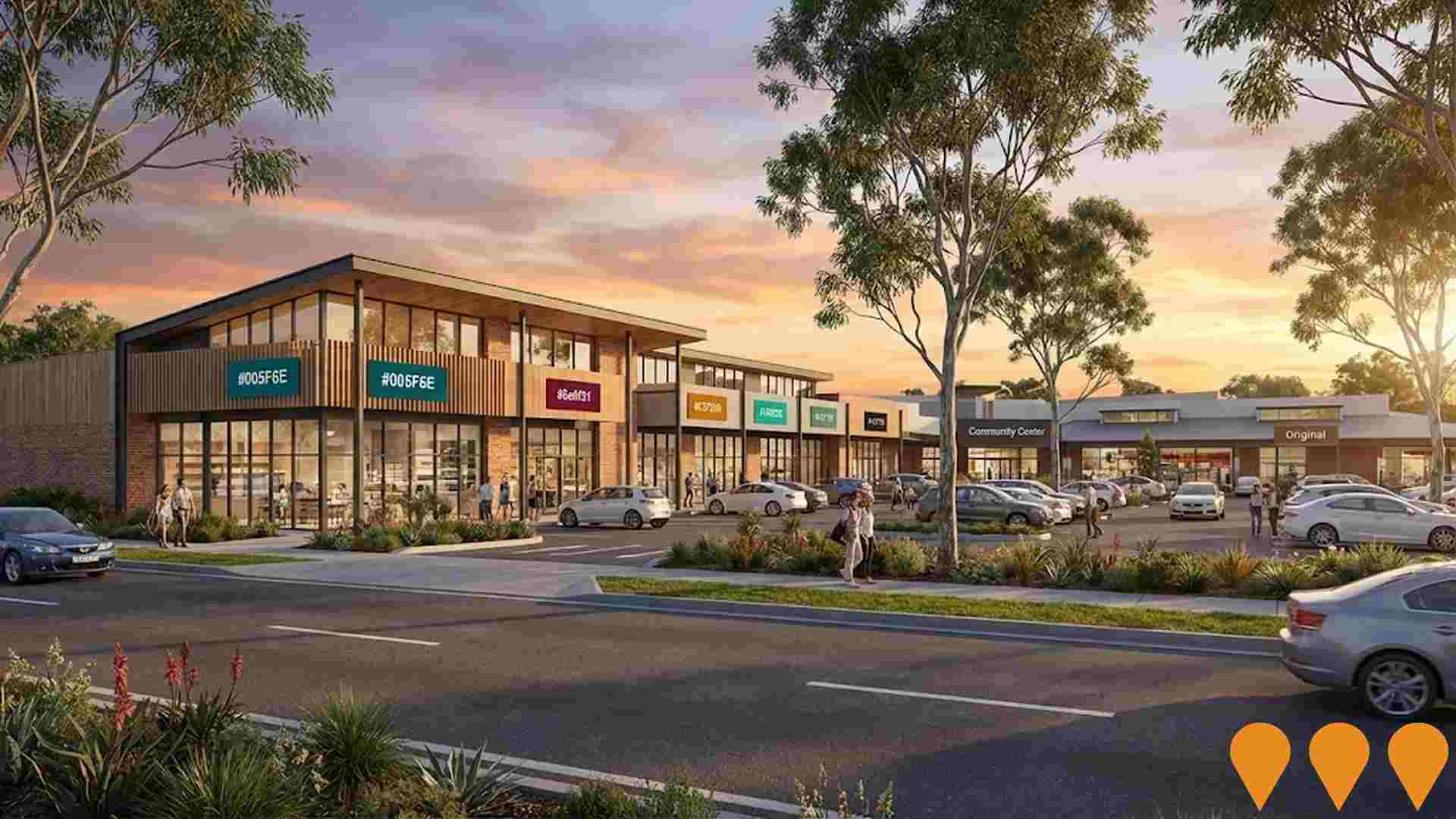
M1 Pacific Motorway Kariong to Somersby Widening
Widening of M1 Pacific Motorway between Kariong and Somersby interchanges to improve traffic flow and reduce congestion on this critical corridor between Sydney and Newcastle.

Broadlands Estate Green Point
Large masterplanned residential community featuring over 300 premium land lots and completed homes in an elevated waterfront-adjacent position with parklands and walking trails.
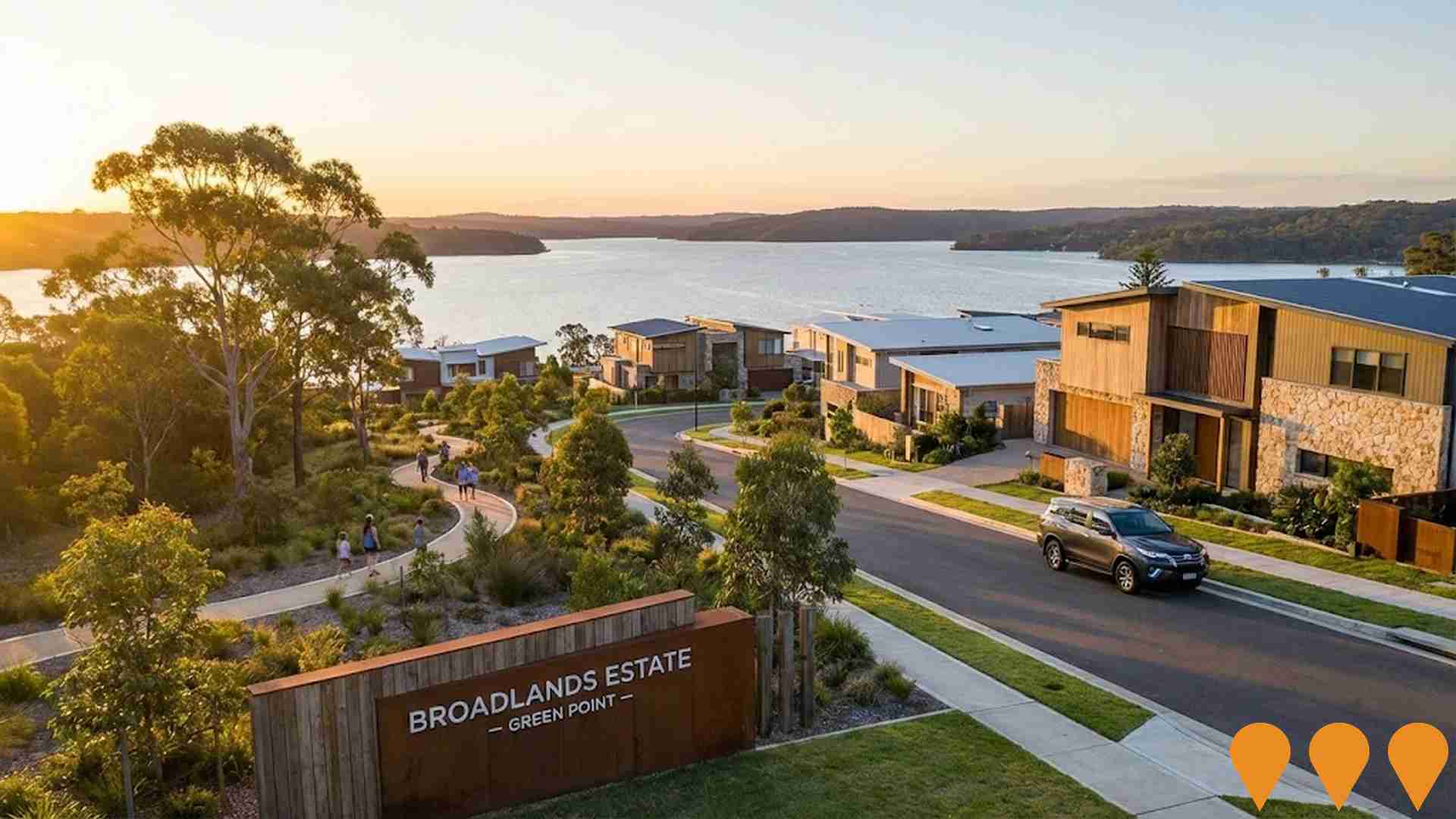
Employment
Employment conditions in Erina - Green Point demonstrate exceptional strength compared to most Australian markets
Erina - Green Point has a skilled workforce with prominent representation in essential services sectors. The unemployment rate was 1.9% as of June 2025.
This is lower than Greater Sydney's rate of 4.2%. Employment growth over the past year was estimated at 2.3%. As of June 2025, 6,715 residents were in work while workforce participation was 49.0%, compared to Greater Sydney's 60.0%. Dominant employment sectors include health care & social assistance, construction, and retail trade.
The area has a particular specialization in health care & social assistance, with an employment share of 1.4 times the regional level. Conversely, finance & insurance shows lower representation at 3.7% versus the regional average of 7.3%. The ratio of 0.7 workers per resident indicates local employment opportunities above the norm. Between June 2024 and June 2025, employment increased by 2.3% while labour force grew by 2.7%, causing the unemployment rate to rise by 0.4 percentage points. In Greater Sydney, employment rose by 2.6%, labour force grew by 2.9%, and unemployment rose by 0.3 percentage points. Jobs and Skills Australia's national employment forecasts from May 2025 project national employment growth of 6.6% over five years and 13.7% over ten years. Applying these projections to Erina - Green Point's employment mix suggests local growth of approximately 7.0% over five years and 14.4% over ten years, assuming constant population projections for illustrative purposes.
Frequently Asked Questions - Employment
Income
The area's income profile falls below national averages based on AreaSearch analysis
AreaSearch released postcode level ATO data for financial year 2022 on Erina - Green Point. The median income among taxpayers was $50,587 with an average of $70,252, both figures above the national average. Greater Sydney had a median income of $56,994 and an average of $80,856 during this period. By September 2025, estimates based on Wage Price Index growth suggest the median income will be approximately $56,966 and the average will be around $79,111. The 2021 Census data shows Erina - Green Point's household, family, and personal incomes rank modestly between the 27th and 32nd percentiles. The earnings profile indicates that 25.2% of residents (3,716 people) fall into the $400 - $799 weekly income bracket, unlike regional trends where 30.9% earn within the $1,500 - $2,999 range. Income diversity is notable in Erina - Green Point, with 31.0% earning under $800 weekly and 24.7% exceeding $3,000 weekly, suggesting a mixed socioeconomic profile. Housing affordability pressures are severe, with only 83.1% of income remaining after housing costs, ranking at the 30th percentile. The area's SEIFA income ranking places it in the 6th decile.
Frequently Asked Questions - Income
Housing
Erina - Green Point is characterized by a predominantly suburban housing profile, with above-average rates of outright home ownership
The dwelling structure in Erina - Green Point, as per the latest Census, consisted of 83.5% houses and 16.6% other dwellings (semi-detached, apartments, 'other' dwellings). This is compared to Sydney metro's 74.2% houses and 25.9% other dwellings. Home ownership in Erina - Green Point was at 48.3%, with the remaining dwellings either mortgaged (33.3%) or rented (18.4%). The median monthly mortgage repayment in the area was $2,167, higher than Sydney metro's average of $2,150. The median weekly rent figure was recorded at $410, compared to Sydney metro's $400. Nationally, Erina - Green Point's mortgage repayments were significantly higher than the Australian average of $1,863, while rents exceeded the national figure of $375.
Frequently Asked Questions - Housing
Household Composition
Erina - Green Point has a typical household mix, with a lower-than-average median household size
Family households account for 68.6% of all households, including 29.0% couples with children, 29.2% couples without children, and 9.8% single parent families. Non-family households constitute the remaining 31.4%, with lone person households at 29.7% and group households comprising 1.6%. The median household size is 2.4 people, which is smaller than the Greater Sydney average of 2.5.
Frequently Asked Questions - Households
Local Schools & Education
Erina - Green Point shows strong educational performance, ranking in the upper quartile nationally when assessed across multiple qualification and achievement indicators
The area's university qualification rate is 27.0%, substantially below Greater Sydney's average of 38.0%. Bachelor degrees are the most common at 19.1%, followed by postgraduate qualifications (5.4%) and graduate diplomas (2.5%). Vocational credentials are prominent, with 36.7% of residents aged 15+ holding them - advanced diplomas (12.4%) and certificates (24.3%). Educational participation is high at 29.3%, including primary (9.8%), secondary (8.4%), and tertiary education (4.7%).
There are 8 schools in Erina - Green Point educating approximately 5,400 students. The area's socio-educational conditions index (ICSEA) is above average at 1079. The educational mix includes 4 primary, 1 secondary, and 3 K-12 schools. As an education hub, the area has 36.6 school places per 100 residents, significantly higher than the regional average of 15.9, attracting students from surrounding communities.
Frequently Asked Questions - Education
Schools Detail
Nearby Services & Amenities
Transport
Transport servicing is good compared to other areas nationally based on assessment of service frequency, route connectivity and accessibility
The analysis of public transport in Erina - Green Point shows that there are currently 151 active transport stops in operation. These stops serve a mix of bus routes, with a total of 136 individual routes providing service to the area. This results in approximately 2,658 weekly passenger trips.
The accessibility of public transport is rated as excellent, with residents typically located about 182 meters from their nearest transport stop. On average, there are around 379 trips per day across all routes, which equates to roughly 17 weekly trips per individual stop.
Frequently Asked Questions - Transport
Transport Stops Detail
Health
Health performance in Erina - Green Point is well below average with prevalence of common health conditions notable across both younger and older age cohorts
Health data indicates significant health challenges in Erina - Green Point, with common conditions prevalent across both younger and older age groups.
Private health cover is high, at approximately 54%, covering around 8,022 people. The most common medical conditions are arthritis (10.9%) and mental health issues (7.9%), while 61.5% of residents report no medical ailments, compared to 64.8% in Greater Sydney. The area has a higher proportion of seniors aged 65 and over at 32.3%, or 4,760 people, compared to 24.5% in Greater Sydney. Health outcomes among seniors are challenging but generally align with the overall population's health profile.
Frequently Asked Questions - Health
Cultural Diversity
In terms of cultural diversity, Erina - Green Point records figures broadly comparable to the national average, as found in AreaSearch's assessment of a number of language and cultural background related metrics
Erina-Green Point's cultural diversity aligns with the wider region, having 77.9% of its population born in Australia, 89.9% being citizens, and 91.1% speaking English only at home. Christianity is the predominant religion, practiced by 60.8%, compared to 53.4% across Greater Sydney. The top three ancestry groups are English (32.1%), Australian (26.3%), and Irish (9.4%).
Notably, South African, Welsh, and Maltese ethnicities each comprise 0.7%, slightly higher than the regional average of 0.5%.
Frequently Asked Questions - Diversity
Age
Erina - Green Point ranks among the oldest 10% of areas nationwide
Erina - Green Point's median age is 50 years, significantly higher than Greater Sydney's 37 years and the national average of 38 years. Compared to Greater Sydney, Erina - Green Point has a higher percentage of residents aged 75-84 (13.9%) but fewer residents aged 25-34 (5.3%). This concentration of 75-84 year-olds is above the national average of 6%. Between the 2021 Census and present, the 75 to 84 age group has increased from 12.0% to 13.9%, while the 35 to 44 cohort has risen from 10.2% to 11.4%. Conversely, the 25 to 34 cohort has decreased from 7.2% to 5.3%, and the 85+ group has fallen from 6.8% to 5.2%. By 2041, Erina - Green Point is expected to experience notable demographic shifts. The 75 to 84 age group is projected to grow by 31% (645 people), reaching 2,703 from 2,057. This growth will be led by residents aged 65 and older, who will represent 82% of the anticipated population increase. Conversely, both the 15 to 24 and 5 to 14 age groups are expected to decrease in number.
